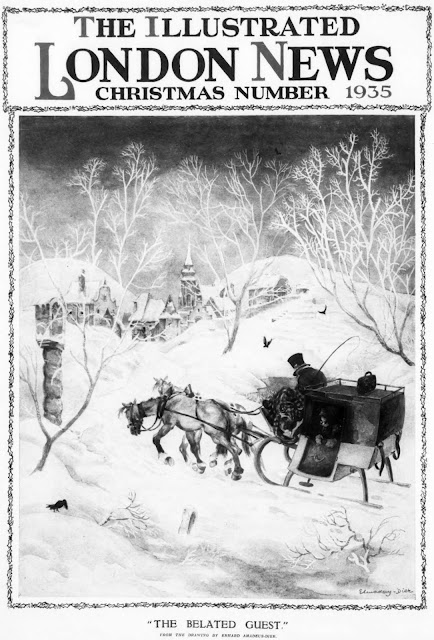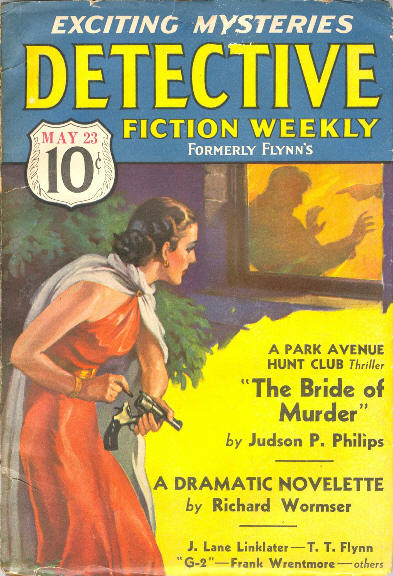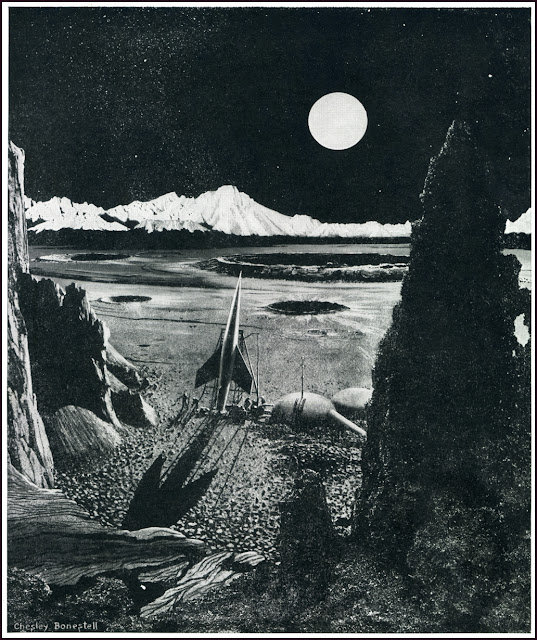"Trouble Is My Business."
First appearance: Baen Free Library 2022.
Novelette (15 pages).
Online at the Baen Free Library (HERE).
(Parental caution: Some strong language.)
"I’m a detective, a professional snoop, and a city like the Big D gives me plenty of opportunity for work. I was born here, I grew up here, and it’s my home."
SAM SPADE had the elusive Maltese Falcon to deal with, but at least it was a thing you could relate to. For private eye Easy Novak, however, this particular missing item is something else:
It was a perfect sphere of some dark gray metal, maybe six inches in diameter. It was completely covered in incredibly intricate engravings and runes. Sliding his thumb across the screen, he rotated the image of the object. It appeared damaged on one side; gouges and scoring marred its surface and the markings had been rendered illegible. “It’s made of a hard metal alloy, the exact composition of which is unknown, and weighs ten pounds. It emits a strong magnetic field.”
“What . . . uh . . . what is it?”
“That is an excellent question, Detective, but truth be told I don’t know."
Despite that, or maybe because of it, the owner wants it back, and the only way to do that is to track down not one but two missing persons, individuals who have their own special reasons for staying missing . . .
Principal characters:
~ Lily ("Bless her heart, I couldn’t run the agency without her"), Cyrus Vermillion ("He’s an attorney, the personal consigliere of Felix Konrad, and has worked for him for many years"), Felix Konrad ("I need your help"), Miguel Konrad ("had gotten addicted to neural-linked virtual reality and abused it so badly that it caused long-term neurological damage"), Maya ("She was good for him, or so I thought"), Iggy ("Ignatius P. Sanchez was a disaffected COFfer turned informant, provided you had the cash to make it worth his while"), and Ezekiel Novak ("There was no time to do anything else—I fired").
Typos: "I you were right"; "from the an associate chapter"; "the pursuers heads’ down"; "how he planning on combining it".
References:
- "the only habitable planet in the 18 Scorpii system":
Our author has done his homework, unlike other SFFictioneers we've seen. The prospects for moving to 18 Scorpii are looking brighter all the time. The Lowell Observatory has called it a "Solar Twin":
"The result of this study demonstrates that 18 Scorpii, the one star that seems to best meet all the criteria of a solar twin, is practically a solar clone in its brightness variations over the past 10 years. Though over 270 trillion miles away, 18 Scorpii is providing key insights into the long-term variability of our own star – and the magnitude of its influence on terrestrial climate change." (Lowell Observatory Press Release HERE.) (Also see Wikipedia HERE and HERE.)
- "the terraformed zones":
We've encountered the concept of terraforming before. (Wikipedia HERE and Universe Today HERE.) (Also see ONTOS HERE, under Resources.)
- "My car’s auto-navigation function was on the fritz again, so I was driving it manually":
- "To protect against data theft, none of my agency’s records or private client data was kept on a computer connected to the planetary network":
Why doesn't everybody do that? (Wikipedia HERE.)
- "The ship was last seen departing the Zeta Leporis system":
It's about 71 light-years from Earth. (Wikipedia HERE.)
- "addicted to neural-linked virtual reality":
Larry Niven's first Gil Hamilton story dealt with the same problem. (Wikipedia HERE and Technovelgy HERE.)
- "its precise function has never been ascertained. It’s a relic of the First Antecessor Race":
A relic of alien high-tech also figured significantly in Isaac Asimov's "The Key" (HERE). (Also see cinepicker.com HERE and Rachel Sherlock HERE.)
- "it’s something tangible, something real, something ancient and mysterious":
Relics seem to exercise extraordinary powers over some people's thinking. (Wikipedia HERE.)
Resources:
- As the postscript tells us, the setting of Mike Kupari's "Trouble Is My Business" is "the world of his upcoming hardboiled detective science fiction novel, Trouble Walked In, featuring detective Ezekiel 'Easy' Novak," several chapters of which are online (HERE).
- Hardboiled science fiction detectives seem to crop up when and where you least expect them:
. . . William C. Bailey's "'X' for Expendable" (HERE)
. . . John Kessel's "The Miracle of Ivar Avenue" (HERE)
. . . Mike Resnick's "The Long and Short of It" (HERE)
. . . Henry Slesar's "The Invisible Man Murder Case" (HERE)
. . . Robert W. Lowndes's "The Futuristic Detective" (HERE)
. . . Stanley Mullen's "S.O.S. Aphrodite!" (HERE)
. . . Stanley Mullen's "Shock Treatment" (HERE)
. . . Larry Niven's "A Kind of Murder" (HERE)
. . . and Kacey Ezell's "Ophir Chasma" (HERE).
The bottom line:
Unless otherwise noted, all bibliographical data are derived from The FictionMags Index created by William G. Contento & edited by Phil Stephensen-Payne.
~~~~~~~~~~~~~~~~~~~~~~~~~~~~~~~~~~~~~~~~~~~~~~~~~~~~~~~~~~~~~~~~~~~~~~~~~~~~

.jpg)
.png)

.jpg)








.jpeg)





















.jpg)









.jpg)





%20-%201st%20edition%20cover.jpg)


%20-%20From%20'Conquest%20of%20Space'%20-%20Chesley%20Bonestell.jpg)

.jpg)
.jpg)